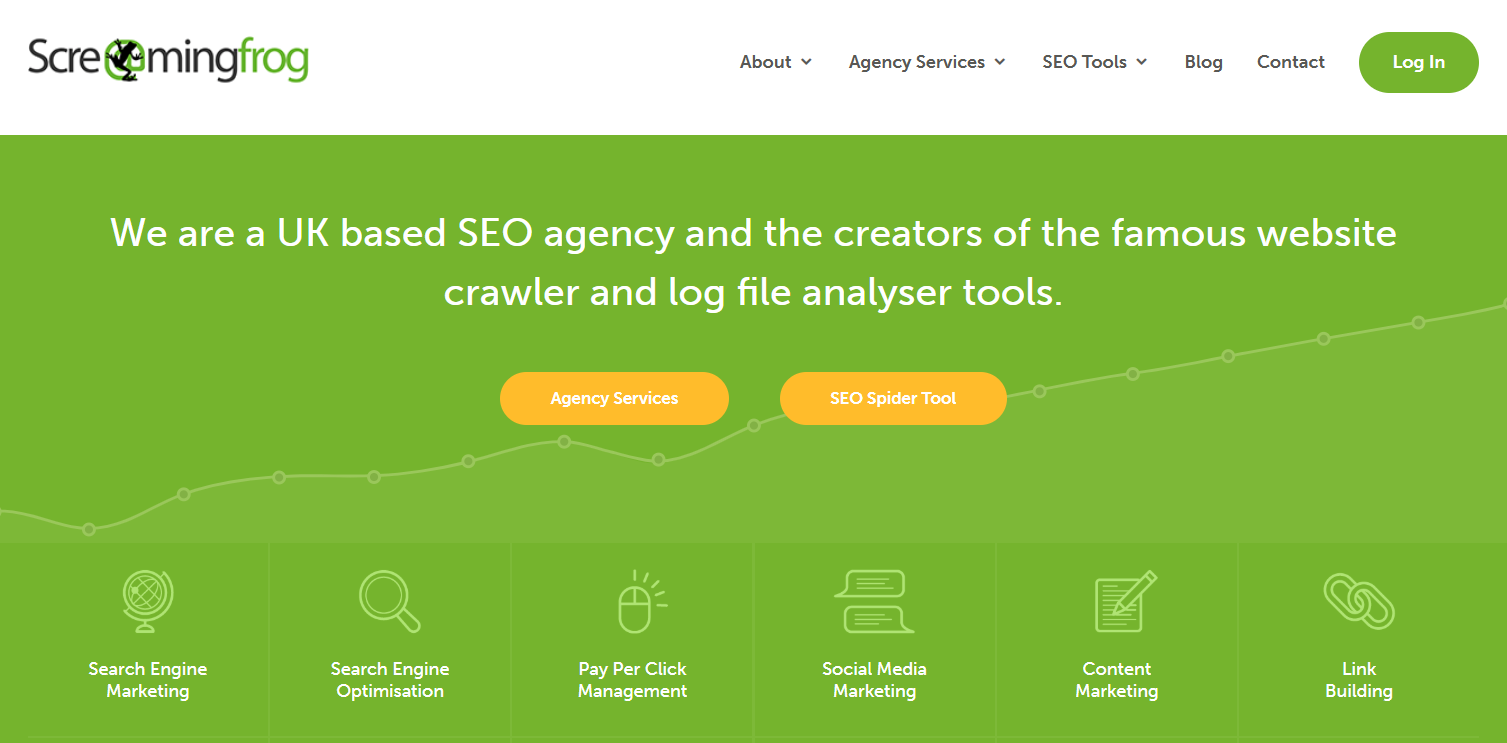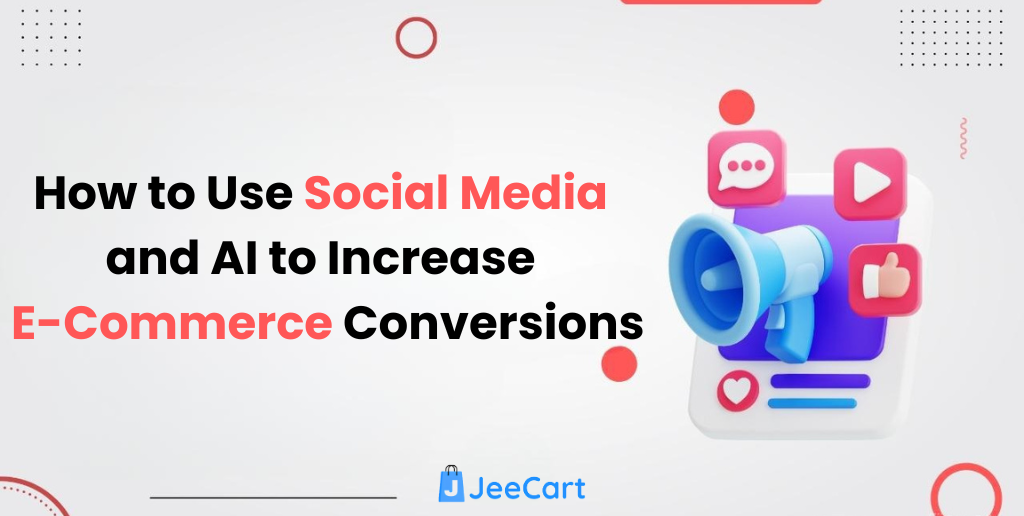Struggling to get your online store noticed? You’re not alone!
With 68% of online experiences starting on a search engine, ranking on Google is a game-changer.
Big brands like Nike dominate search results while rising stars like Gymshark used SEO to build a global presence.
The right e-commerce SEO strategy can drive more traffic, boost sales, and grow your brand organically.
If you’re not optimizing, you’re leaving money on the table!
In this blog, we’ll uncover how to optimize your store for maximum visibility and success.
What is E-commerce SEO?
- E-commerce SEO is key to getting your store noticed online. It helps Google understand what you’re selling. When someone searches for “organic skincare products,” you want your store on the first page, not buried down low.
- Let’s say you sell custom sneakers. Use keywords like “custom sneakers for athletes” or “personalized sneakers for runners.” This tells Google exactly what you offer.
- Other things matter too like making your site load fast, using high-quality images, and making sure it’s mobile-friendly.
- Without SEO, you could miss out on a lot of potential traffic. Good SEO can boost your site’s visibility and bring in more customers.
- Backlinks are also important. When other trusted sites link to yours, Google takes notice.
- Also, focus on aspects like fast loading times and secure pages.
- SEO isn’t a one-time thing. Keep optimizing and stay on top of E-commerce trends to keep your store growing.
How to Create an E-Commerce SEO Strategy?
Building an SEO strategy for your e-commerce site is key to boosting traffic, sales, and visibility. Let’s break it down into actionable steps:
Step -1. Research Your Target Audience
- Understand who your customers are: their preferences, search behaviors, and needs
- Use tools like Google Analytics or SEMrush to gain insights into your audience.
Step-2. Keyword Research: Find What People Are Searching For
- Focus on long-tail keywords and phrases that align with product queries.
- Use Google Keyword Planner, Ahrefs, or Ubersuggest to discover high-volume, relevant keywords.
- Target both broad and niche keywords that describe your products.
Step-3. Optimize Product Pages
- Title Tags: Include your primary keyword.
- Meta Descriptions: Write compelling, keyword-rich descriptions to improve click-through rates.
- Image Optimization: Use descriptive alt text and compress images for faster load times.
Step-4. Content is King: Create Valuable Content
- Write product descriptions that are detailed and informative.
- Consider adding blogs or buying guides related to your products, helping you rank for informational queries.
Step-5. On-Page SEO: Set the Foundation Right
- Structure your URLs with keywords.
- Include internal links between relevant products and categories.
- Use schema markup to enhance search visibility and showcase product ratings, prices, and availability.
Step-6. Off-Page SEO: Boost Authority
- Backlinks & Mentions – Get links from blogs, influencers, and PR.
- Social & Local SEO – Engage on social media and list in directories.
- Partnerships – Use affiliates, guest posts, and influencer marketing.
Step-7. Mobile Optimization
- Ensure your e-commerce site is mobile-friendly. Google prioritizes mobile-first indexing.
- Fast load times and responsive design are essential.
Step-8. Improve Site Speed
- Use tools like Google PageSpeed Insights to analyze and optimize site load times. A slow website can hurt SEO and sales.
Step-9. Backlink Strategy
- Earn quality backlinks by getting featured on reputable sites or working with influencers.
Step 10. Monitor & Analyze Results
- Regularly track your rankings, traffic, and sales. Utilize Google Search Console and Google Analytics to evaluate performance.
By implementing these steps, you’ll position your e-commerce website for improved rankings, greater traffic, and boosted sales!
How to Choose Keywords for E-commerce Product Pages?
Picking the right keywords for your e-commerce site can make or break your search rankings. Here’s how to do it right:
- Think Like a Customer – What would you type into Google if you were looking for your product? Use common phrases and terms your audience actually searches for.
- Use Long-Tail Keywords – Rather than simply “running shoes,” opt for “top running shoes for flat feet.” These are simpler to rank for and draw more specific buyers.
- Spy on Competitors –Discover which keywords competitors are ranked for by utilizing tools such as Ahrefs or SEMrush.
- Optimize for Intent – Utilize keywords that align with purchasing intent, such as “purchase,” “sale,” or “top offers.”
- Leverage Keyword Tools – Google Keyword Planner, Ubersuggest, and Moz can assist in discovering valuable keywords.
Choose wisely and watch your traffic grow!
8 Top E-commerce SEO Tools for Beginners
Beginning SEO for your e-commerce site can seem daunting, yet with the appropriate tools, it becomes significantly easier. Here’s a compilation of the best e-commerce SEO tools that can assist newcomers in enhancing their online shops and improving their search engine positions.
1. Avada SEO & Image Optimizer

If you operate a WooCommerce or WordPress shop, Avada SEO & Image Optimizer is essential. It aids in streamlining SEO tasks and enhancing page load speeds through image optimization.
- Best for: Image optimization and on-page SEO improvements.
Features:
- Automatic image resizing and compression.
- Customizable SEO titles and meta descriptions.
- Bulk optimization for faster results.
- Easy integration with WordPress and WooCommerce.
- Compatible with other popular SEO plugins.
Why it’s great for beginners: It saves time by automating key tasks like image compression while still offering customizable SEO settings to help your product pages rank higher.
2. Google Search Console

This free tool from Google is essential for tracking how your website performs in search results. It helps identify issues and provides insights into how to improve your site’s SEO.
- Best for: Monitoring search performance and fixing issues.
Features:
- See search queries that bring traffic to your site.
- Identify indexing issues.
- Submit sitemaps for better crawling.
- Review mobile usability and page performance.
3. Ahrefs

Ahrefs is known for its strong backlink analysis, keyword research tools, and site auditing capabilities. It’s especially helpful when looking for opportunities to improve your site’s authority.
- Best for: Keyword research and competitive analysis.
Features:
- Comprehensive keyword research tool.
- Detailed backlink analysis.
- SEO audit and site health monitoring.
- Competitor research to see what’s working for others.
4. Yoast SEO

Yoast is an easy-to-use WordPress plugin that helps you optimize your content for search engines.
- Best for: On-page SEO for WordPress sites.
Features:
- SEO-friendly content analysis.
- Auto-generated sitemaps.
- Content optimization suggestions.
- Readability analysis for better content structure.
5. Moz Pro

Moz Pro offers a set of tools to improve site rankings, track keyword performance, and analyze backlinks.
- Best for: All-in-one SEO tracking.
Features:
- Keyword research and ranking tracker.
- Site crawl for SEO errors.
- Link building and backlink analysis.
6. SEMrush

SEMrush is a versatile SEO tool that provides keyword research, competitive analysis, and site audit features.
- Best for: In-depth SEO audits and competitor analysis.
Features:
- Keyword research and rank tracking.
- Competitor analysis and backlink tracking.
- Site audit for SEO issues and improvements.
7. Screaming Frog SEO Spider

Screaming Frog is a powerful website crawler that identifies SEO issues like broken links, missing tags, and duplicate content.
- Best for: Site audits and SEO analysis.
Features:
- Crawl websites to detect SEO issues.
- Check for broken links and redirects.
- Find duplicate content and missing metadata.
8. Ubersuggest

Ubersuggest is a free SEO tool that provides keyword ideas and competitor analysis.
- Best for: Keyword research and content suggestions.
Features:
- Keyword research with search volume data.
- Content ideas and gap analysis.
- Backlink data and SEO audit.
These SEO tools are beginner-friendly, but they also offer scalability as your e-commerce store grows. Start using them, and you’ll be on your way to improving your store’s SEO!
The Benefits of SEO: How Top Brands Use it to Thrive
In today’s digital landscape, SEO (Search Engine Optimization) isn’t just a buzzword, it’s a vital strategy that businesses, both big and small, rely on to boost their visibility and reach.
Whether you’re a startup or an established giant, SEO can play a game-changing role.
Let’s dive into the key benefits of SEO, with some real-world examples from famous brands that have nailed it.
1. Organic Traffic: The Gift That Keeps on Giving
Paid advertisements may be transient, but organic traffic acts as a continuous salesperson around the clock. By enhancing your website for search engines, you draw in users who are genuinely searching for your offerings—without incurring costs for each click.
Amazon: The unrivaled ruler of e-commerce, Amazon, prevails in search outcomes for countless items. Their tactical implementation of keywords, enhanced product pages, and clever internal linking generate substantial organic traffic.
2. Cost-Effective Marketing: More ROI, Less Expense
Why invest thousands in advertisements when you can attract visitors at no cost? SEO requires patience, yet it yields long-term benefits, lessening the necessity for large marketing expenditures.
HubSpot: This leading inbound marketing company excels in SEO. By producing top-notch content that addresses users’ inquiries, HubSpot attracts thousands of organic leads—reducing paid advertising expenses and fostering trust.
3. Enhanced User Experience: Keep Them Hooked
SEO isn’t solely focused on keyword stuffing—it’s about crafting a smooth, enjoyable experience for users. Quicker loading speeds, responsive designs for mobile, and captivating content ensure users return.
Apple: Renowned for its elegant designs, Apple’s site showcases exceptional user experience.
4. Credibility & Trust: Be the Brand They Believe In
A top position on Google not only attracts visitors; it also enhances trustworthiness. Individuals have confidence in search engines, and being on the first page makes you appear as a leader in your field.
Starbucks: From store locators to new flavors and coffee recipes, Starbucks guarantees high rankings for related searches.
5. Targeted Audience = Higher Conversions
Connecting with the correct audience is part of the struggle. SEO draws in visitors who are actively seeking your products, resulting in improved conversion rates.
IKEA: By targeting search phrases such as “budget-friendly furniture” and “contemporary home décor,” IKEA guarantees that individuals looking for these items find their website—attracting not only visitors but also potential buyers.
6. Long-Term Benefits: Play the Long Game
SEO isn’t a quick fix; it’s an investment. Once you establish your authority, the benefits keep rolling in without constant spending.
Moz: As an SEO tool provider, Moz practices what it preaches. With consistently high-ranking content on “SEO tools” and “SEO guides,” they’ve built a sustainable traffic source that continues to pay results.
7. Competitive Edge: Stay Ahead of the Pack
Your competitors are using SEO—are you? The higher you rank, the more market share you grab.
Nike: In the highly competitive sports apparel industry, Nike maintains its lead by enhancing its product pages and content. Their SEO approach guarantees they achieve top rankings for high-value keywords, maintaining their position at the forefront of search results.
Final Thoughts
SEO is not merely an option; it’s essential. From generating organic traffic to enhancing trust, it serves as the hidden asset for numerous successful brands. If Amazon, Apple, and Nike can leverage its potential, you can too. Begin optimizing, remain in front of the competition, and observe your business flourish!
FAQS
1. What is E-commerce SEO and why is it important?
E-commerce SEO enhances your online store for search engines, assisting you in achieving a higher position in search results. It enhances visibility, traffic, and sales, which is essential for differentiating oneself in a competitive market.
2. How can I improve my e-commerce site's SEO?
Concentrate on intuitive design, comprehensive product descriptions incorporating pertinent keywords, quick load speeds, mobile responsiveness, and high-quality backlinks to enhance your website's SEO effectiveness.
3. What are product page SEO best practices?
Utilize distinct, keyword-dense titles and descriptions, high-quality images with alt attributes, customer testimonials, and SEO-optimized URLs to enhance the search engine visibility of your product pages.
4. How do keywords fit into E-commerce SEO?
A blog isn't mandatory but advantageous, as it focuses on long-tail keywords, attracts traffic, and captivates customers with informative content, enhancing overall SEO.
6. How do I handle duplicate content on my e-commerce site?
Utilize canonical tags to indicate preferred page versions and employ 301 redirects when necessary to prevent SEO penalties resulting from duplicate content such as comparable product descriptions.
7. How long does it take to see results from E-commerce SEO?
SEO is a long-term approach, with outcomes usually visible in 3-6 months, influenced by competition and optimization measures. Maintain consistency for enduring achievement.







